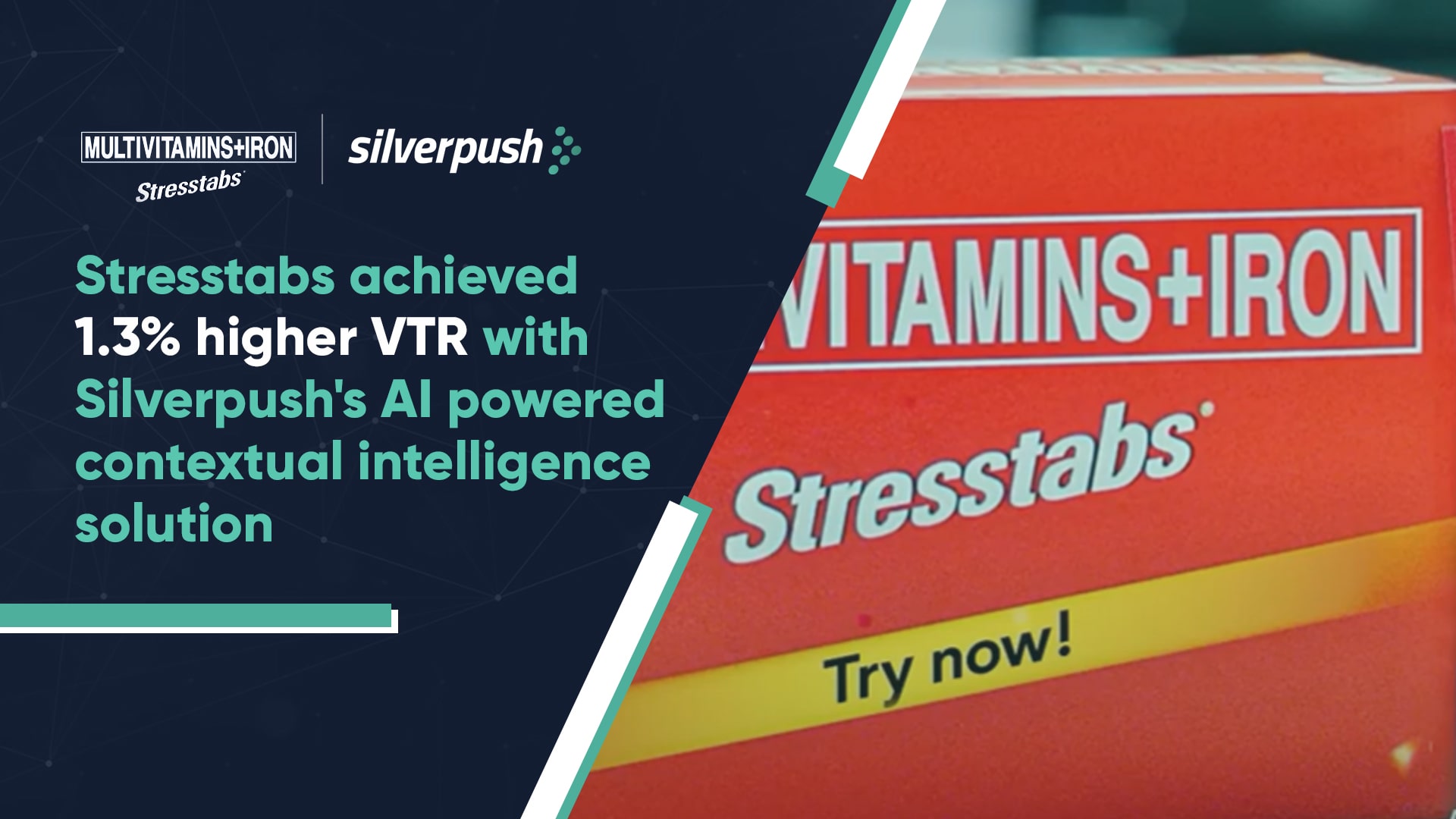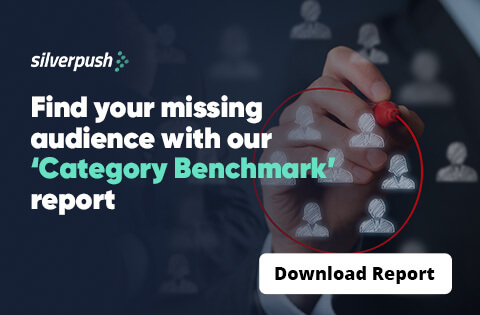How to Create Relevant Contextual Ads with Mirrors Generative AI | 15 Jun, 2023
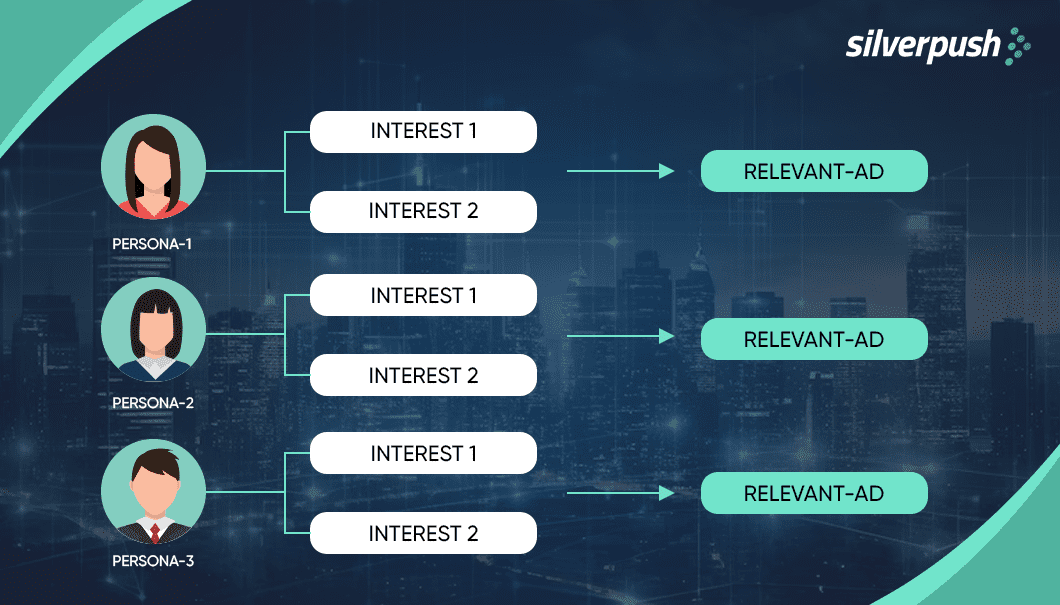
Let’s face the truth: THIRD-PARTY COOKIES ARE LONG GONE!
Advertisers need to drastically shift from conventional targeting methods (requiring audience data) to privacy-focused strategies without compromising on delivering relevant ads.
Traditional targeting methods relied on cookies to reach targeted audiences by building a detailed profile of their online activity.
Growing data privacy concerns and the implementation of regulations like CCPA and GDPR raise the dilemma – how to balance between delivering personalized and relevant ads while respecting user privacy?
Enters Mirrors Generative AI, the next-gen contextual planning tool capable of discovering audiences without cookies and reaching them precisely in contextually relevant moments. The highly advanced tool was recently launched by Silverpush at its Cannes Lions 2023 debut.
Amplifying Relevance and Reach with Generative AI-Powered Contextual Advertising
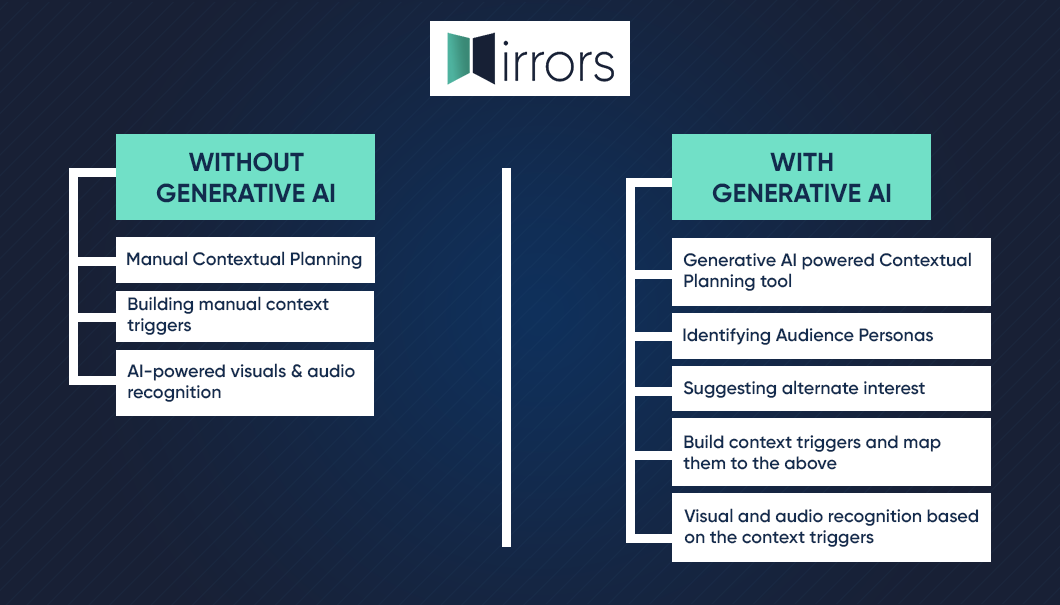
Mirrors, the flagship product of Silverpush, has recently integrated Generative AI into its contextual advertising technology to help brands reconnect with their untapped audiences.
It is a revolution that will boost the ever-present contextual intelligence by discovering newer audience personas without any human bias, guesswork, or stereotypes of the past.
By leveraging its predictive AI technology, Mirrors goes beyond the basics and delves deep into the content consumption habits of the target audience.
Utilizing advanced generative AI technology, Mirrors carefully analyzes videos and identifies key contexts in webpages, surveys, and a wide range of content on the open web, examining each word with precision.
This enables Mirrors to uncover patterns, decipher meaning, and extract valuable insights that surpass surface-level understanding.
Challenges Faced by Advertisers in Finding Contexts Manually
To maximize engagement, advertisers aim to target diverse audience personas based on their specific interests, timing, and context. However, relying on manual context-building methods has certain limitations.
1. Scale and Complexity: Manually creating context triggers for a large volume of content can be a time-consuming and complex task. Advertisers may struggle to keep up with the constantly evolving content landscape and the need to identify and update relevant triggers across various platforms and channels.
2. Subjectivity and Bias: Manual context trigger creation involves human judgment, which can introduce subjectivity and bias. Advertisers may have different interpretations of content, resulting in inconsistent or inaccurate context triggers that may not align with the intended audience or message.
3. Limited Contextual Understanding: Fully comprehending the context of every piece of content manually can be challenging. Advertisers may miss subtle nuances, references, or trends that could impact the appropriateness of ad placement.
4. Resource Intensity: Creating and managing manual context triggers requires dedicated resources, including skilled personnel, time, and effort. Advertisers may face limitations in terms of available resources, hindering their ability to effectively build and maintain comprehensive sets of context triggers.
5. Timeliness and Real-time Updates: Content evolves rapidly, and new trends and topics emerge regularly. Advertisers may struggle to keep their manual context triggers up to date, leading to potential misalignment between ads and current content relevance.
6. Scalability and Adaptability: As advertising campaigns scale and expand across different platforms and channels, managing manual context triggers becomes more challenging. Advertisers may find it difficult to adapt their triggers to new formats, channels, or emerging content types.
Eliminating Human Bias and Automating Context Discovery
The real power of Mirrors Generative AI lies in its ability to seamlessly integrate AI as a co-pilot to human intelligence. The advanced technology builds a comprehensive context list, well aligned with the audience’s personas and their direct and alternate interests. This enables advertisers to reach untapped/overlooked yet relevant audiences, resulting in enhancing incremental reach.
Why Plan Your Next Campaign With Mirrors Generative AI?
1. Cookieless Audience Discovery: The contextual planning tool will enable advertisers to identify contextually relevant audiences without relying on third-party cookies.
2. Scale without Compromise: Better contextual relevance leads to improved audience understanding, which can often be overlooked. By tapping into these overlooked audiences, advertisers can enhance their reach and engagement.
3. Understand Multicultural Audience: Mirrors Generative AI uses diverse datasets to assess performance across races and cultures. Then, analyzing metrics and understanding the emotional impact, bias, inclusion, and purchasing intent. This generates audience personas and passion points, offering advertisers valuable insights for informed decision-making.
4. Create Highly Customized Campaigns: Utilizing Mirrors Generative AI offers the opportunity to go beyond pre-defined taxonomies and gain unparalleled flexibility in creating highly customized campaigns.
Ready to Experience 3X Audience Expansion with Mirrors Generative AI?
It’s your time to broaden your audience reach with Mirrors Generative. To know how our advanced tool can boost your ROI fill and widen your reach with precision out the form on the right.

BLOGS
Partner Spotlight: Alice Ovadia, VP of Media Strategy
Silverpush is excited to highlight TRUth for our Partner Spotlight this week. We caught up with Alice Ovadia, VP of Media Strategy at TRUth, to learn more about the agency and talked to her about her big predictions for the ad market in the coming years. Here’s what Alice said. 1. ...
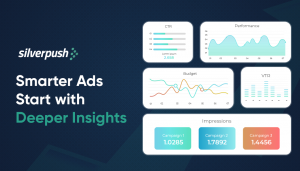
BLOGS
Why Granular Insights Are Critical for Ad Campaign Optimization
When your ad campaign ends and the dashboard lights up with a “great” VTR or a CTR that’s above average, you celebrate, right? But then comes the pause. What actually made it work? Was it the creative? The audience? The time of day? The context of the video? Most platforms ...
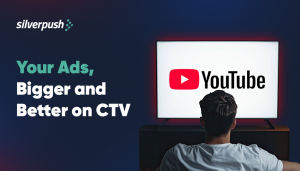
BLOGS
YouTube CTV Advertising: Bigger Screens, Bigger Impact
YouTube has always been a powerhouse for brands looking to connect with audiences. With over 2 billion monthly active users, it’s a platform that reaches people everywhere, on their phones, tablets, and laptops. However, the way people watch YouTube today is very different from how it used to be in the ...


